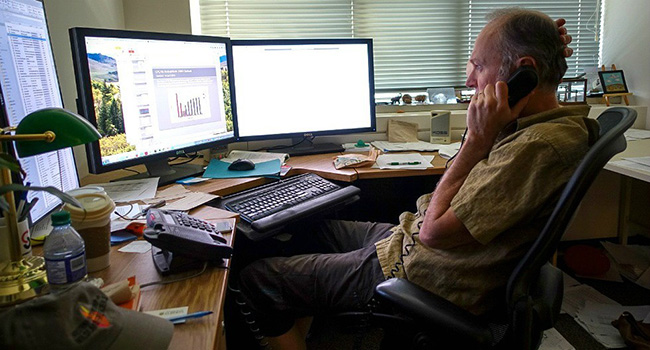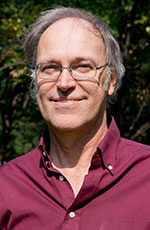The Natural Sciences and Engineering Research Council’s Canadian Wildfire Strategic Network, in which the federal government is investing $5 million, will bring the best minds in wildfire science together to train students, develop tools and improve the state of knowledge related to wildfire management.
“There are 7,000 fires that burn 2.5 million hectares – which is half the size of Nova Scotia – annually,” said Mike Flannigan, U of A wildfire expert and the principal investigator for the network. “Canadians need to learn to live with wildfires because they are only going to continue and get worse with time.”
The mission for the network comes from the Canadian Forest Service’s Blueprint for Wildland Fire Science in Canada (2019-2029), which provided a road map of six priority themes for future investment in fire research and management.
Flannigan said the network will use the next five years to tackle three of those themes – understanding fire in a changing world, managing ecosystems and delivering innovative fire management solutions.
“One thing we want to look at is the wildland urban interface – that transition between urban and rural, where people love to live, but it’s surrounded often by very flammable trees – trying to make these areas more resilient to fire,” said Flannigan.
Although 2019 was slow relative to recent years, Flannigan said wildfires in 2020 have already threatened the communities of Squamish, B.C., Halifax, N.S., and municipalities in Saskatchewan, Manitoba and Quebec.
“Fire is natural, but at times it threatens our communities and even destroys parts of them,” said Flannigan, recounting communities devastated by Alberta fires such as Slave Lake in 2011, Chuckegg Creek in High Level last year and Fort McMurray in 2016, Canada’s costliest natural disaster.
He added Canadian fire management is among the best in the world, but it’s challenging. Demands are changing and the climate is changing.
The U of A has a long history of fire research in Canada, but there are still lots of things that need to be explored.
“This network will help Canada punch above its weight in the fire world once again,” he said.
Other projects the network will undertake include using machine learning to be able to better manage fire management resources; exploring the interaction between fire and insects, such as pine beetle and spruce budworm infestations; looking at longer-range forecasts so fire management agencies can be better prepared for upcoming severe fire weather episodes; defining wildfire risk in Canada; and managing ecosystems around communities to make them more fire resilient, to name a few.
Developing tools relevant to forest-based communities is also a major focus of the network. Jen Beverly, a U of A wildfire expert, is involved in two of the research themes and sees enormous opportunity. She will be working on projects to help plan evacuation routes and identify areas for strategic fire containment around communities to reduce the risk to people and property.
“One of our goals is to help position communities with information for when and if a fire approaches their community,” said Beverly.
The network will include eight principal investigators, with seven co-applicants across eight universities. Partners include the Canadian Forest Service, Parks Canada and numerous stakeholder fire management agencies across Canada. As for the future leaders of Canada’s wildfire response, the network will fund 35 master’s students, 19 doctoral students and 12 post-doctoral researchers.
In making the announcement, Seamus O’Regan, Canada’s minister of natural resources, said the network will help researchers better understand how climate change is increasing the wildland fire threat in Canada.
“Our fire seasons are now longer, more severe and more dangerous than ever,” said the minister. “We have to continue to reduce the risk that fires pose to people, communities and infrastructure.
“That is exactly what this investment will do.”
| By Michael Brown
This article was submitted by the University of Alberta’s online publication Folio, a Troy Media content provider partner.
The views, opinions and positions expressed by columnists and contributors are the author’s alone. They do not inherently or expressly reflect the views, opinions and/or positions of our publication.



